More recently, the doors for the balcony were almost invisible in the interior of the room ...
|
|
Poliuretan foam is in great demand in the building materials market. He... |
To make a docking of two linoleum paintings invisible and durable is used ... |
Handicraft processing: selection of funds and features of application
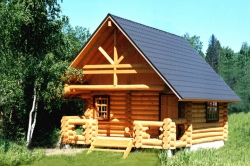
The irresistible desire of the inhabitants of megacities at least a step closer to nature led to the rapid development of suburban construction. It is not difficult to understand. That the most popular form of suburban real estate is a wooden house, living in which is characterized by a number of advantages that life in a brick building cannot give. The chopped houses and baths built from environmentally friendly wood, in their originality, environmental friendliness, internal microclimate and comfort significantly exceed structures from other building materials. Due to the fact that suburban construction is given increased attention, there probably is no householder who does not know that a high -quality log house will be required to build a reliable house. In order to carry out its workpiece, before starting construction, it is necessary to prepare the material of wooden logs. Wood, the basis of which is cellulose, in itself is a favorable environment for the development of mold and microorganisms, and, given the fact that the log house is constantly in the open air, as well as in the conditions of constantly changing temperature and humidity, favorable conditions are created that accelerate the lesion of wood fungus and other microorganisms. In order to prevent premature loss of the initial appearance of the construction and wood losing with mold, it is necessary to process the log house with an antiseptic, which is an integral stage in the construction of any building from a log house. How to process a log house and how to choose an antiseptic read further.
Content
- Antiseptic processing of log logs: The relevance of the problem
- What does the protective processing of the log house include?
- Frower grinding: how to carry out mechanical processing of a log house?
- Fire -retardant processing of the log house: the choice of fire -retardant composition
- Antiseptic processing of the log house: Guide for a novice master
Antiseptic processing of log logs: The relevance of the problem
Being in conditions of constant exposure to ultraviolet radiation, wood loses its original appearance, gradually dyeing and acquiring gray shades. Despite the fact that this does not affect the strength of wood, however, it does not cause pleasant emotions, since the appearance of the building irrevocably worsens. To prevent such detrimental consequences, it is enough to apply an appropriate paintwork or antiseptic. One of the varieties of bacterial damage to the logging building is the lesion of mold, which is no less dangerous for wood. In ancient times, the defeat with a white construction fungus (mold) was considered a construction plague, to prevent the further spread of which had to be burned at home. Today, mold is no longer as terrible as before, and in order to prevent its appearance, it is also enough to make antiseptic processing of the log house in a timely manner.
In addition to white fungus, there are a large number of bacterial agents that cause rotting of wood. These include: red, gray, green and other types of rot. But the greatest danger among them is blue rot or, the so -called blue, favorable conditions for the development of which is fresh sawing, high humidity, poor ventilation in the rooms and low ambient temperature. The presence of blue, which, spreading, is able to hit up to 70-80 % of wood in one week, indicates a fungal lesion and indicates imminent rotting of wood. Unlike white fungus (mold), the development of which can be stopped, it does not make sense to deal with blue, and its appearance must be prevented at the stage of harvesting the material. And the use of an antiseptic will help in this.
Log houses photo
What does the protective processing of the log house include?
In addition to antiseptic processing of the log house, there is a need for its comprehensive processing, which implies a number of measures, the conduct of which will provide comprehensive protection of wood. Distinguish between internal and external wood processing.
External wood processing
Due to the fact that the outside is constantly outdoors, it is exposed to adverse environmental factors, such as atmospheric precipitation, sharp temperature changes and direct ultraviolet radiation. All this has a negative effect on the quality of the material and contributes to the active propagation of mold and fungi in wood, the appearance of biological pests and acceleration of decay. To prevent this, it is necessary to antiseptic processing of wood, which will provide biological, bacteriological and chemical protection of wood. Since wood is characterized by high ignorance, it also needs fire -retardant processing.
Another problem requiring a solution is the appearance on the surface of the wood of cracks that occur when wood drying out after its moisture, especially when exposed to elevated temperatures or when the water freezes in microcracks. To prevent this problem, it is necessary to carry out additional processing of the log house, which, in addition to solving this problem, will give the construction the desired decorative appearance. Grinding the log house will help to cope with the solution to this problem.
Internal wood processing
Due to the fact that the inside of the log house is in relatively favorable conditions, it does not need special processing. However, this situation is fundamentally changing if we are talking about a wooden bath, the internal walls of which are in conditions of high humidity and high temperatures. With this in mind, they, like the outer side of the log house, need antiseptic and fire -retardant treatment.
Wooden log house photo

Frower grinding: how to carry out mechanical processing of a log house?
The grinding of a log house, which is an integral stage of external processing, is a laborious process, for which specialized skills and tools will be required. The grinding of a log house or its machining is the first stage of the complex processing of the log house, which allows you to eliminate irregularities, microcracks and the remains of the bark. In addition, a log house that has previously been grinded is more effectively absorbed by fire retardant and antiseptic compounds, which significantly reduces their consumption. The grinding of a log house allows you to improve the appearance of the log house and effectively emphasize the natural texture of the wood.
To ensure grinding efficiency, it is carried out after drying the surface layer of wood, when the texture and color of wood have not changed yet. The grinding of raw wood is not advisable, since it contributes to the bullying of wood fibers and damage to the structure of wood.
The easiest way to grind wood is its processing using a grinder equipped with an abrasive disk. If you want to improve the quality of processing, as well as speed up the process, you can use a grinding machine equipped with nozzles, which are characterized by varying degrees of granularity. For final cleaning of the log house, use fine -grained nozzle. At the end of the work to remove sawdust, use a vacuum cleaner.
Fire -retardant processing of the log house: the choice of fire -retardant composition
An equally important stage in the preparation of a log house is fire -retardant processing, which implies wood impregnation with specialized compounds. The action of fireproof compounds is based on their abilities when exposed to open fire or high temperatures to secrete substances that form a foam fireproof layer that prevents the access of oxygen to them and thereby stopping the fire and spread of fire.
The most common fire -retardants that have gained consumer trust are Pirilax's compositions. To process the inner surface of the logs of saunas and baths, it is recommended to use the composition of the SS-20 brand, which can withstand prolonged exposure to high temperatures (up to 110 degrees). To process the outside of the log house, it is recommended to use the compositions of the luxury and 3000 brands, which can be applied both with a brush and a spray. The component composition of fire retardants contributes to their deep penetration into the structure of wood, which significantly reduces the consumption of the material. The absence of substances toxic substances in the composition guarantees their environmental safety.
The compositions of the above brands are far from the only means used for fire retardant processing of wood. Fire retardants made in accordance with innovative technologies also have antiseptic properties.
Antiseptic processing of the log house: Guide for a novice master
In order to increase the operational period of the log house and maintain its initial appearance, it is necessary to carry out another stage of complex protection of wood antiseptic treatment, which is carried out both from the external and from the inside. The use of an antiseptic agent contributes not only to the extension of the durability of the beam and logs, but also reliably protect the log house from the effects of tree insects that can bring any structure from wood into disrepair.
In order to conduct high -quality antiseptic treatment, it is necessary to responsibly approach the choice of an antiseptic, which is a means that has a bactericidal and fungicidal effect that guarantees the protection of a log house from mold and microorganisms. Since antiseptic treatment is carried out from the external and from the inside, it is important to understand the types of antiseptics, the effectiveness of which depends on their type and proper use.
How to choose the right antiseptic for a log house?
Experts propose to distinguish between two types of antiseptics:
- Leached antisepticsintended for internal processing of the log house and characterized by low resistance to precipitation;
- Difficult antiseptics, which includes synthetic and natural oils, are designed to process the outside of the log house and are characterized by resistance to leaching under the influence of precipitation. Their only drawback is slow drying.
To date, the construction market offers an extensive spectrum of antiseptic agents of both domestic and foreign manufacturers. Due to the variety of funds presented, masters who do not have sufficient experience may encounter a number of difficulties. To simplify the choice of the antiseptic composition, experts proposed several rules, following which you will not be mistaken when choosing an antiseptic.
Rules for choosing an antiseptic composition:
Rule number 1. Give preference to the means of trusted manufacturers who managed to establish themselves in the construction market. By giving preference to the means of a well -known brand, you can not doubt the quality of the chosen composition;
Important! The most popular means of demand among consumers are the products of domestic brands of Neomid 200 and Senezh. As for foreign manufacturers, Tikkurila and Teknos brands are in greatest demand.

Rule No. 2. The next rule is relevant not only for antiseptic agents, but also of any other products. High -quality antiseptic agents cannot be cheap, in connection with which, experts recommend preference to funds that are at least in the middle price category. In addition, it is not recommended to purchase funds from the hands, since, when buying antiseptic compounds in a reliable chain store, you risk encountering a fake that can be not only ineffective, but also toxic;
Rule number 3. The label of a high -quality antiseptic composition should indicate that it is intended to protect against all types of biological agents: insects, fungus, rot and mold. In addition, during the implementation of the fund, the supplier must comply with the conditions for its storage;
Rule No. 4. For external treatment, it is necessary to use difficult antiseptics, which, despite the longer period of preserving their properties, need periodic update. This is due to the fact that any remedy, under the influence of moisture, will be washed out and needs to update the external coating.
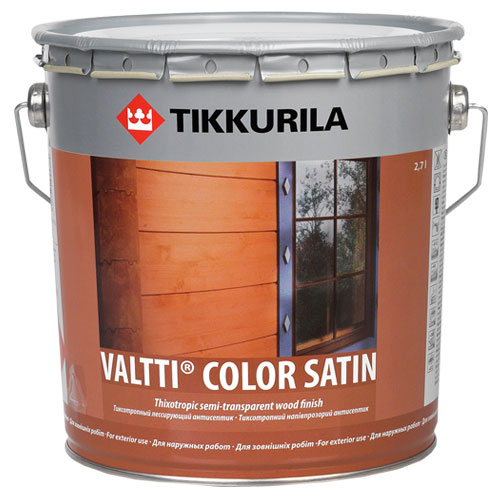
How to conduct antiseptic wood treatment? Step -by -step guide
The cutting of the log house is carried out by antiseptic compounds several times, at various stages of construction. Currently, the manufacturer often offers wood, which has already undergone preliminary antiseptic treatment.
Important! Despite the fact that the cost of wood that has undergone antiseptic treatment is slightly higher than the unprocessed log house, in the process of construction you will save time and means, since you do not have to process the log house immediately after assembly. The factory preliminary processing is characterized by a deep penetration of antiseptic compounds, which guarantees reliable wood protection.
Many masters are wondering: is the processing of a fresh log house immediately after its acquisition?, And there are often disputes regarding the processing of the log house immediately after its assembly.
Despite the fact that some builders believe that the application of antiseptic impregnations reduces the effectiveness of air exchange, preventing the timely drying of the log house, but this assumption is fundamentally incorrect. Modern water -based products do not reduce the environmental friendliness and quality of the log house. Having carried out the initial antiseptic treatment of the log house, you will reliably protect the log house for six months until it reaches its final drying and shrinkage, after which you can final processing the log house.
Important! As for the temporary framework for processing the log house, according to experts, the final processing of the log house is best carried out after dried wood (19-20% humidity), after which the final finish can be carried out.
There are several options for processing wooden log cabins:
Manual processingimplying antiseptic compounds with a roller or brush. Despite the fact that this work is long and painstaking, applying antiseptics manually allows you to provide reliable protection of each centimeter of wood. If you are located enough time, give preference to this particular method, since it allows you to qualitatively process the compounds of the beam or logs, the end parts of the log house and other problem areas;
Approaching compositions using sprayers A more modern method of antiseptic treatment, which can significantly save the time of work. Modern spray guns allows you to distribute antiseptic compositions along the entire outer surface of the log house in a short time.
Important! In the process of applying the antiseptic, make sure that there is not a single unprocessed area. To facilitate the control of the antiseptic composition, you can purchase tinted agents. The use of tinted composition is advisable if you plan to produce decorative finish processing in the future.
In both cases, antiseptic impregnation is applied in two layers. The first layer is applied after the final drying of the wood (processing in rainy weather is strictly prohibited) and is left for several days to dry. After that, repeated processing is carried out. If you use the brush, the antiseptic composition must be applied evenly even strokes, periodically changing the direction of the brush.
Recently, antiseptics based on oils or wax have been effectively used that give the surface some decorativeness. Experts recommend using antiseptics based on wood resins, bee wax and natural oil (often linen).
Often there are disputes about the need to process log cabins with antiseptic compounds. One party claims that the process of processing natural material with chemical compounds, motivating this by the fact that it recently left logs by unprocessed, and the other quite justifiably claims that the funds used in modern construction guarantees maximum air exchange and extends the operational period of wood buildings.
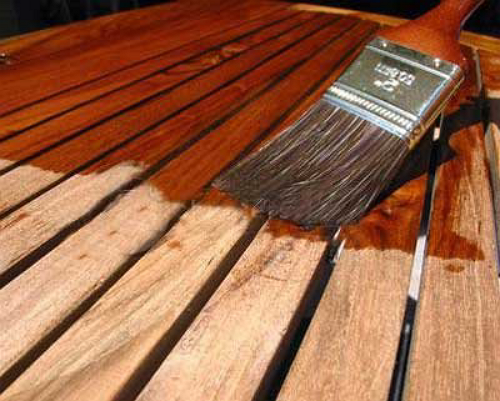
Protective antiseptic impregnations significantly extend the effective operation of log house, which blocks any theoretically alleged harm. The practical use of antiseptics confirms that the use of antiseptic compositions contributes to the maximum preservation of external beauty and natural wood, and also protects against aggressive natural factors. From a material point of view, the effectiveness of the use of impregnations is also justified, since it is better to spend a slight amount on an antiseptic than subsequently dismantle the log house and replace the elements that are rotted and defeated with insects.


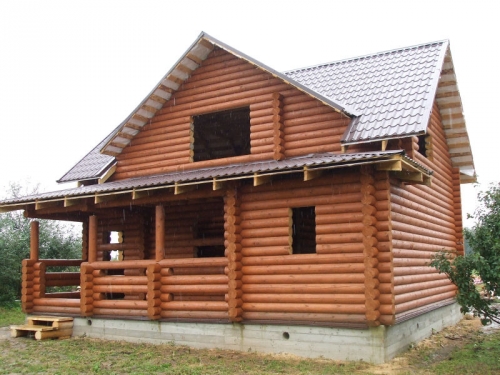
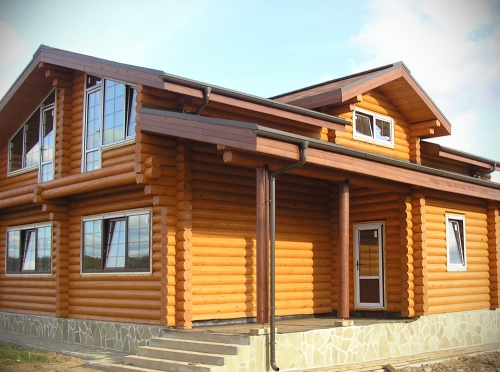
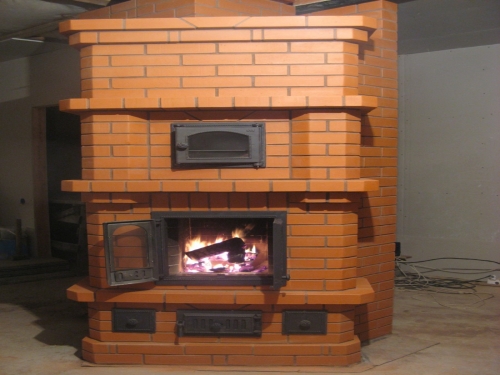
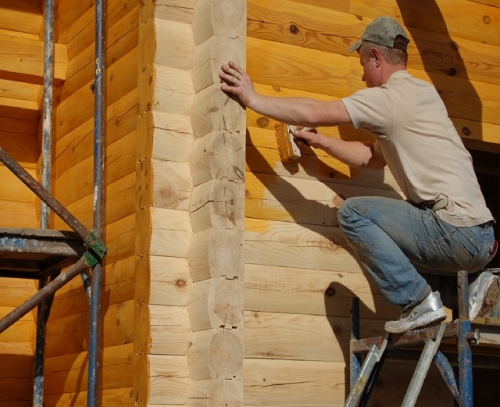
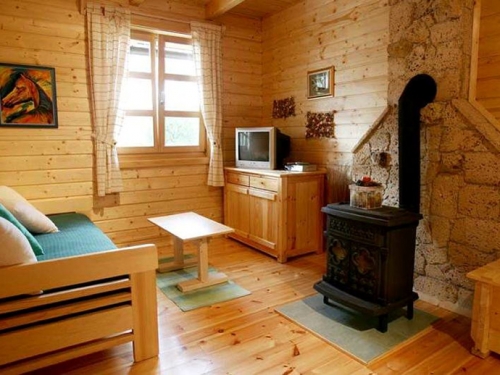
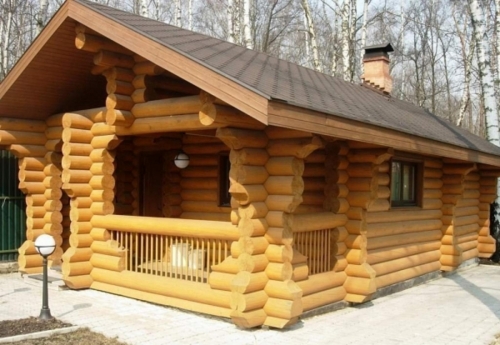
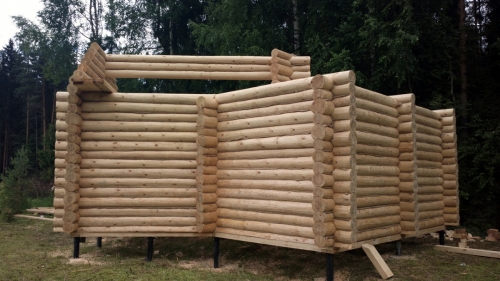
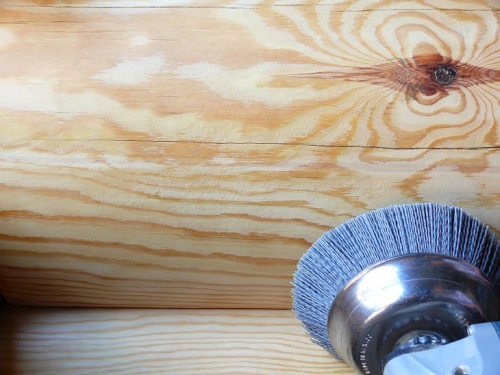
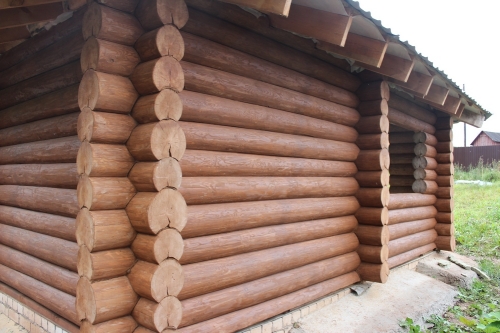
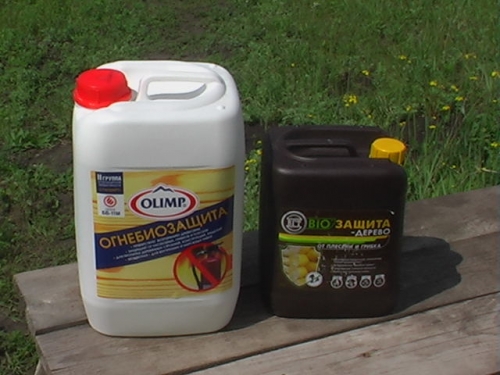
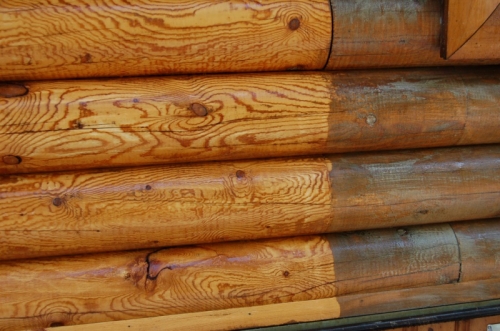
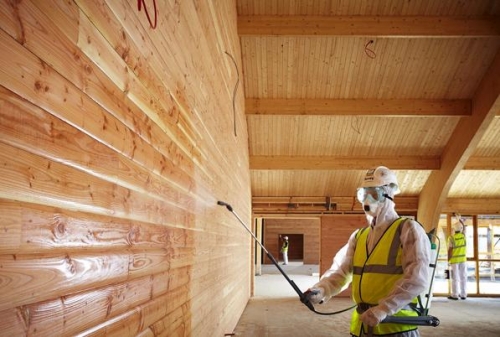
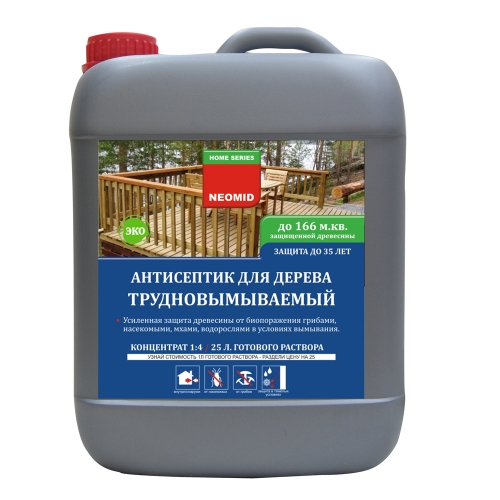
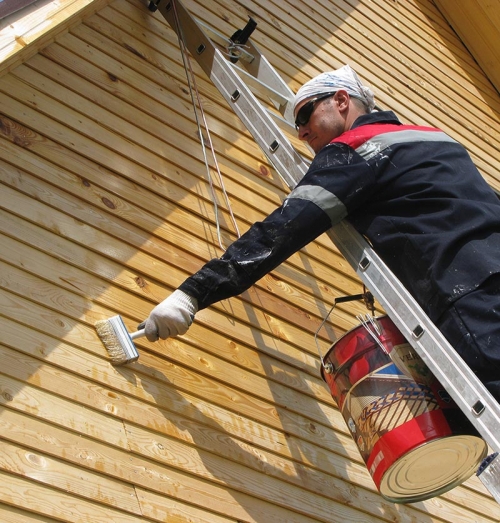
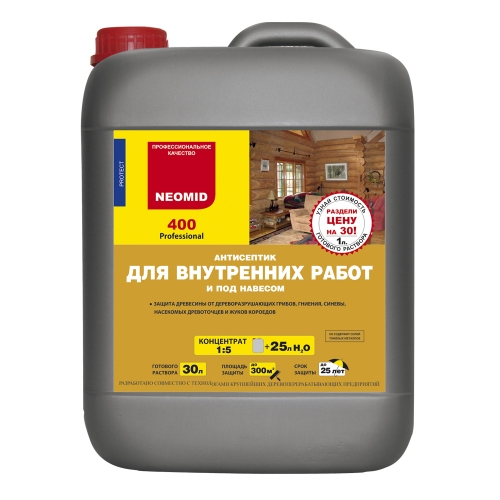
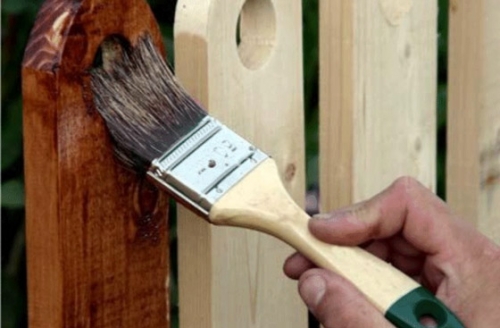
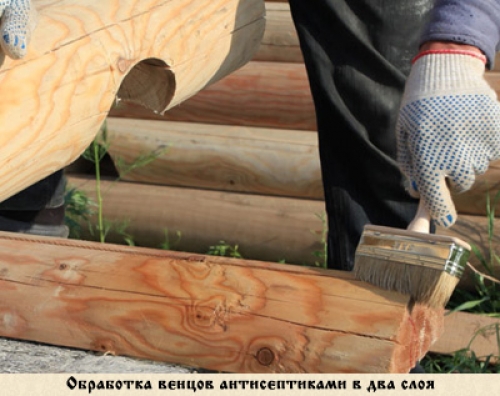
http://www.help-01.ru/ognezas
http: //www.help-01.ru/oognezaschitnaya-obrabotka-materialov-i-konstruktsi ...
http://www.help-01.ru
http://www.help-01.ru